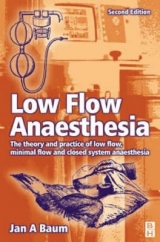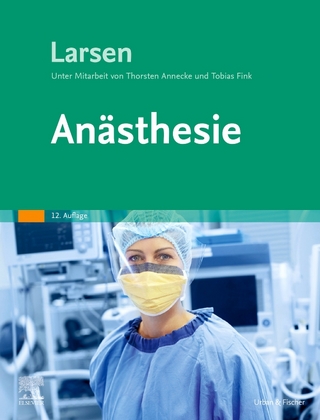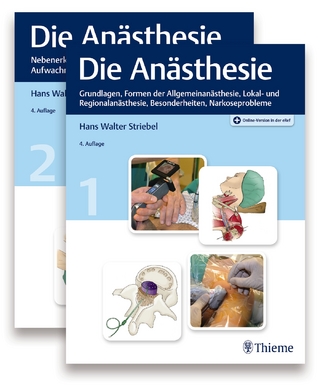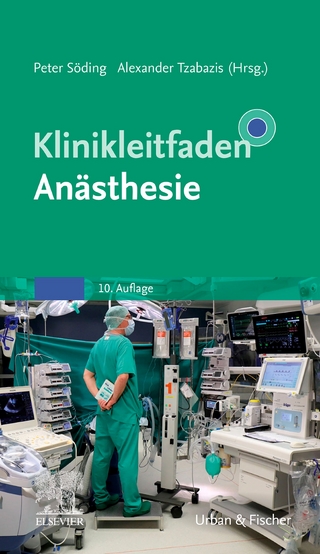
Low-flow Anaesthesia
Butterworth-Heinemann Ltd (Verlag)
978-0-7506-2127-4 (ISBN)
- Titel erscheint in neuer Auflage
- Artikel merken
In recent years methods of anaesthesia with reduced fresh gas flows and closed rebreathing systems have been viewed with increasing interest. However, as a great many anaesthetists are not familiar with the techniques of Low Flow, Minimal Flow and Closed System anaesthesia, some concerns have been expressed about their use. Although this alternative approach to anaesthesia may call for a reappraisal of current practice, the advantage of economies in the use of gases, tightened occupational safety regulations as well as environmental considerations provide compelling reasons for an exploration of these methods. 'Low Flow Anaesthesia: the Theory and Practice of Low Flow, Minimal Flow and Closed System Anaesthesia' is one of the few monographs providing a comprehensive overview of the subject. After an initial discussion of theoretical fundamentals, the author proceeds to a detailed appraisal of problems arising in clinical practice. Different types of modern anaesthetic machines and monitoring systems are examined in detail and the text is rounded off by a look at future developments in the field.
Originally published in German, this updated English edition has been revised in collaboration with a well-respected UK consultant anaesthetist and should prove essential reading for all anaesthetists, both in training and in practice.
FULL CONTENTS: Introduction; 1 Breathing Systems - Technical Concepts and Function: differentiation of breathing systems under the aspect of underlying technical concepts; classification of breathing systems in accordance with functional criteria; breathing systems under technical and functional aspects; the function of breathing systems in relation to fresh gas flow; References; 2 Rebreathing Systems - The Development of a Technical Concept: the development of breathing systems - looking at history; the development of anaesthesia management with semi-closed rebreathing systems - considerations on the current situation; References; 3 Pharmacokinetics of Anaesthetic Gases: Oxygen; Nitrous Oxide; volatile anaesthetics; total gas uptake; References; 4 Anaesthetic Methods with Reduced Fresh Gas Flow: Low Flow anaesthesia; Minimal Flow anaesthesia; Closed System anaesthesia; References; 5 Control of Inhalational Anaesthesia: computer simulation programs; control of inhalational anaesthesia; maintenance of anaesthesia; characteristics of anaesthesia management as a function of fresh gas flow; rules for anaesthesia management; References; 6 Advantages of Rebreathing: reduced consumption of anaesthetic gases; reduced costs; reduced environmental pollution; improved anaesthetic gas climate; extended potentials of patient monitoring and improved knowledge of machine functions; References; 7 Technical Requirements for Anaesthesia Management with Reduced Fresh Gas Flow: technical regulations and standards; technical requirements for the anaesthetic equipment with respect to the extent of fresh gas flow reduction; anaesthetic machines with closed breathing system; implications for anaesthetic practice; References; 8 Monitoring: technical regulations - safety facilities of inhalational anaesthesia machines; main- and side-stream gas analysers; measurement of oxygen concentration; measurement of volatile anaesthetic concentration; measurement of nitrous oxide concentration; measurement of carbon dioxide concentrati
| Erscheint lt. Verlag | 11.3.1996 |
|---|---|
| Zusatzinfo | 120 ills. |
| Verlagsort | London |
| Sprache | englisch |
| Maße | 156 x 234 mm |
| Gewicht | 530 g |
| Themenwelt | Medizin / Pharmazie ► Medizinische Fachgebiete ► Anästhesie |
| ISBN-10 | 0-7506-2127-3 / 0750621273 |
| ISBN-13 | 978-0-7506-2127-4 / 9780750621274 |
| Zustand | Neuware |
| Haben Sie eine Frage zum Produkt? |
aus dem Bereich



